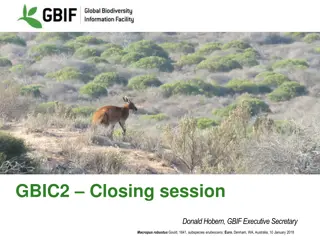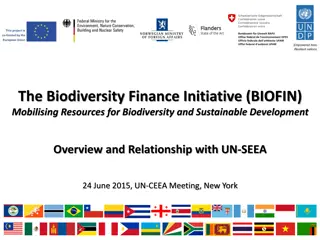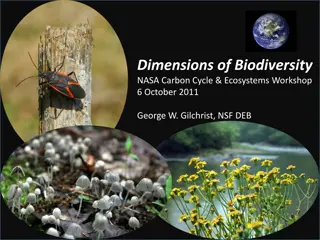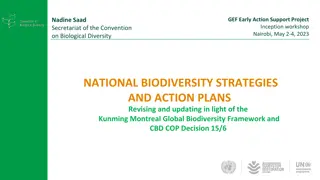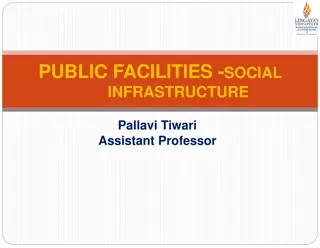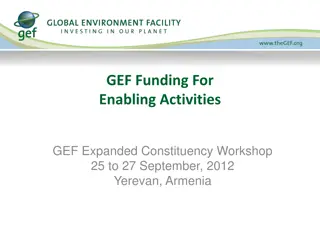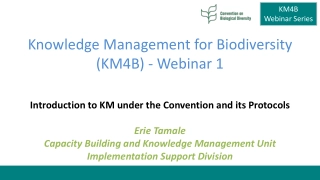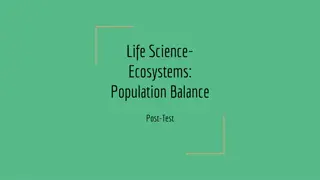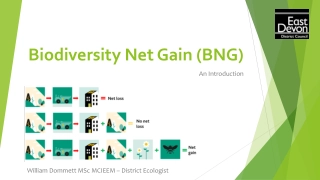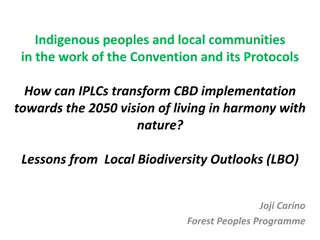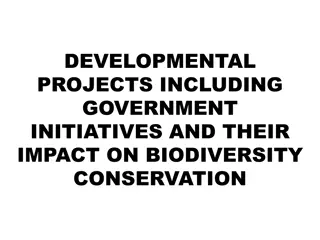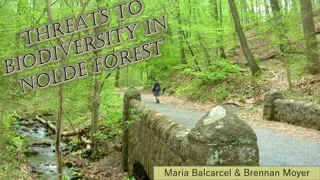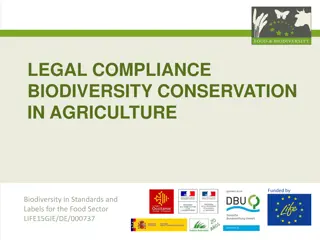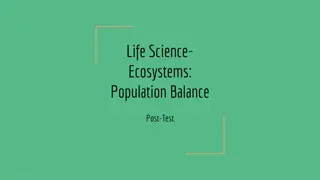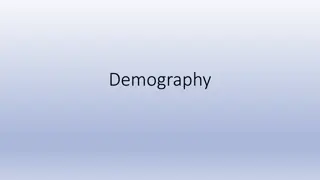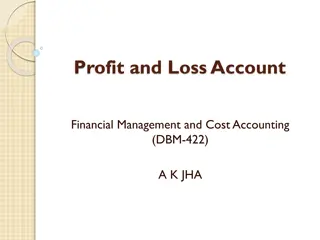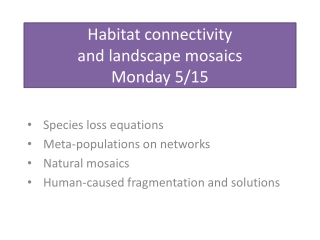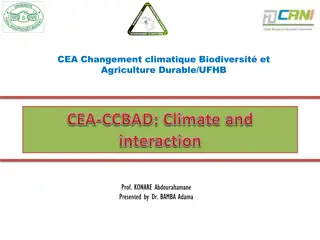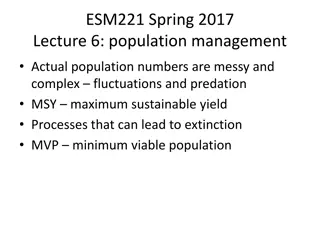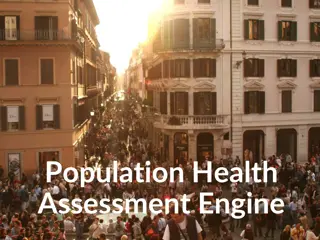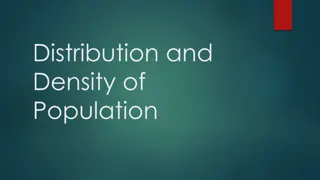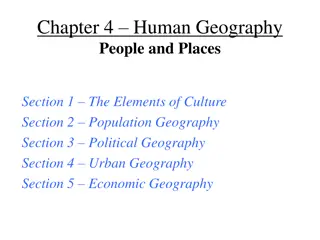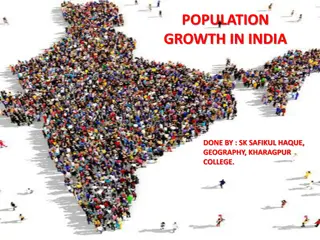Understanding Population Dynamics and Biodiversity Loss
The content discusses the importance of biodiversity for ecosystem function, causes of biodiversity loss, factors affecting declining biodiversity, and strategies for managing populations and ecosystems to restore biodiversity. It covers topics such as population growth rates, habitat loss, climate change, and factors influencing population dynamics. The content also includes examples and calculations to illustrate how population size changes over time.
Download Presentation

Please find below an Image/Link to download the presentation.
The content on the website is provided AS IS for your information and personal use only. It may not be sold, licensed, or shared on other websites without obtaining consent from the author. Download presentation by click this link. If you encounter any issues during the download, it is possible that the publisher has removed the file from their server.
E N D
Presentation Transcript
Lecture 2: Population growth rates Arc of the course Intro Biodiversity is important for ecosystem function Many causes for the loss of biodiversity Module 1 population growth Module 2 habitat loss and protection Module 3 - climate
Declining Biodiversity Declining global biodiversity can be explained by reference to the five HIPCO factors H Habitat Loss & fragmentation I Invasive Species P Pollution C Climate Change O Overharvesting (direct killing) (We re not addressing invasive species or pollution.)
What do we need to know to manage populations and ecosystems and restore biodiversity and ecosystem function? 2. How can we manage local biodiversity and ecosystem functions? 1. What do we know about populations? 3. How can we manage global cycles?
Information about births and deaths is essential to predict future population size and inform management. How would you get this information?
Population dynamics: What primary factors affect population size? Nt+1= Nt + B - D + I - E Nt = initial population size at time t B = number of individuals born during the time interval D = number of individuals that die during t I = number that immigrate during t E = number that emigrate during t
Calculation 1. Complete the new population size for these two examples Nt+1= Nt + B - D + I - E Population of finches on an island over 1 yr Nt = 463 B = 87 D = 93 I = 39 E = 14 Population of Daphnia in a small pond over summer (3 months) Nt = 14, 207 B = 8,212 D = 4,945 Nt+1 = Nt+1 =
1. Completed population size examples Nt+1= Nt + B-D + I-E Population of Finches on an island during 1 year Nt = 463 + B = 87 - D = 93 + I = 39 589 - E = 14 -107 Nt+1= 482 Population of Daphnia in a small pond over 3 summer months Nt: 14, 207 + B: 8,212 22,419 - D: 4,945 Nt+1 = 17,474 463 87 + 39
Definitions What does per capita mean? What does rate mean?
Developing a growth rate equation to predict population change (1) For simple predictions, we assume no E or I. Why? Formula becomes: Nt+1= Nt + B - D To allow you to model population size across time periods, re-write Nt+1- Nt as: dN/dt = B-D d is shorthand for the change in (derivative of) The change in N (pop size) with respect to changing t (time) is written: dN/dt = population growth rate dN/dt is an operator (don t divide N by t)
Developing a growth rate equation to predict population change (2) Birth and death are combined into the term growth rate, number of births minus deaths in the time period: B D Growth rate is typically expressed per capita, (because population size affects the population- level growth rate): B/N D/N = r; b-d=r. b = per capita birth rate; d = per capita death rate Rate of change in N can be written: dN/dt = rNt Exponential growth is described as dN/dt = rNt
The intrinsic growth rate (r) Definition: Under ideal conditions, with unlimited resources available, every population has a particular maximum growth potential for growth. Notated as r or rmax = b d under ideal conditions
Calculation 2. Calculate growth rate Population of Finches on a remote island during 1 yr Nt = 463 B = 87 D = 93 What is the growth rate, r? = b-d = B/N-D/N = (B-D)/N = r
2. Calculate growth rates Population of Finches on a remote island during 1 year Nt = 463 B = 87 D = 93 B/N-D/N = (87-93)/463 = r = -0.013 Population of Daphnia in a small pond over 3 months Nt = 14, 207 B = 8,212 D = 4,945 What is the growth rate, r?
2. Calculated growth rates for examples Population of Finches on a remote island during 1 year Nt = 463 B = 87 D = 93 Population of Daphnia in a small pond over 3 summer months Nt = 14,207 B = 8,212 D = 4,945 What is the growth rate? B/N-D/N = (8,212- 4,945)/14,207 = r = 0.23 What is the growth rate? r= -0.013
3. Check in on r Write a group definition of r What information do you need to calculate r?
Quick Review of log and e: Logarithms are the inverse of exponentials 100 = 102; log10(100)=2; log10(102)=2; log (100)=2 The base of the log can be 10 or e e, Euler s constant 2.718, is the base of the natural logarithm, loge=ln(x) In Excel, ex is written as exp(x); using your calculator 1. What is the natural log of 2 = loge(2)= ln(2) = ____? type 2, press ln 2. e3.73767 = ___ ? type 3.73767, then press ex (2nd function) 3. log(10)= ____? ln(e) = ____ ? ln(ex)= _____ (Natural log = area under the curve of y=1/x)
Quick Review of log and e: Logarithms are the inverse of exponentials 100 = 102; log10(100)=2; log10(102)=2; log (100)=2 The base of the log can be 10 or e e, Euler s constant 2.718, is the base of the natural logarithm, loge=ln(x) In Excel, ex is written as exp(x); using your calculator 1. What is the natural log of 2 = loge(2)= ln(2) = _0.69___? 2. e3.73767 = _42__ ? 3. log(10)= _1___? ln(e) = _1___ ? ln(ex)= _x____ (Natural log = area under the curve of y=1/x)
Definitions: Review Population: individuals of a species that live in the same area at a given time Species: a group of organisms that are morphologically, behaviorally, or biochemically distinct from other groups and that produce viable offspring with each other but can t with others Community: suite of species that co-occur in time and space Biodiversity: variety of life forms Ecosystem: interacting biotic & abiotic components of an area Biome: region & its biological community shaped by regional temperatures, amount of precipitation, soil, & disturbance (land) or in salinity, depth, and flow (aquatic; less used) Biosphere: the combination of all living organisms & our ecosystems; where life resides r = per capita growth rate and often intrinsic growth rate, the per capita growth rate of a population in ideal conditions
Exponential Growth In many species, the population can reproduce continuously, and generations can overlap. When populations increase by a constant proportion of the population size (yet by ever more individuals each time period), there is exponential growth (or if declining, exponential decay). E.g., a population doubles in size every 10 yr
The exponential growth model describes a population with overlapping generations that grows continuously at a fixed rate.
Exponential growth formula, the base model for population growth Nt= N0ert Use this formula to predict for an exponentially growing population one of: population size, intrinsic growth rate, or elapsed time This formula assumes that conditions for survival and reproduction are ideal (= perfect) This formula has many applications (this equation is the integral of dN/dt = rN)
4. What do each of these variables mean? Nt = N0 = e = r = t =
5. Calculate population size after 1, 2, and 3 months of growth for this example: Fruit flies in a lab culture with ideal conditions, Initial population size (at time zero), N0 = 147 Time, t = 1 month Intrinsic growth rate, r = 0.1 Formula: Nt= N0ert All together for the first time step Solving for Nt
6. Calculated size over three months Fruit flies in a lab culture with ideal conditions, Initial population size (at time zero), N0 = 147 Time, t = 1 month Intrinsic growth rate, r = 0.1 Formula: Nt= N0ert 1 mo: Nt= 147* e0.1*1mo = 162 2 mo: 3 mo:
6. Calculated size over three months Fruit flies in a lab culture with ideal conditions, Initial population size (at time zero), N0 = 147 Time, t = 1 month Intrinsic growth rate, r = 0.1 Formula: Nt= N0ert 1 mo: Nt= 147* e0.1*1 mo = 162 2 mo: Nt= 147* e0.1*2 mo = 179 3 mo: Nt= 147* e0.1*3 mo = 198 (note: the population grows by a greater amount each time step because more individuals are reproducing)
7. Challenge questions: a. Draw N vs t for r = 0, N0 = 500, for t = 0, 10, 20 b. Draw N vs t for r = 1, N0 = 500, for t=0, 2, 5, 10 (put above 2 on the same graph) c. Draw dN/dt on the Y axis versus N on the X axis. (What equation would you use?) d. What would the slope be?
7. Challenge questions a, b: N vs t for r = 0 & 1, N0 = 500, for t=0, 2, 5, 10 yr
7. Challenge c & d: dN/dt vs N for N0=500, r = 0, 0.5, 1 d. dN/dt = rN; slope = r
The doubling time (td) of a population is the number of years it will take the population to double in size. = ln( / ) 2 td r ln(2) is a constant 0.693. (~0.7) The larger r, the less time it takes for the population to double. Initial population size does not matter here
8. Doubling time problems, Solve for td using td = ln(2)/r : a. A continuously growing population of bears has a population size of 300 and its intrinsic rate of increase is 0.07 per year. Assuming that this rate of increase remains the same, about how long should it take for the population to reach 600? A. 5 years B. 10 years C. 14 years D. 20 years E. 28 years b. In 2012 the human population hit 7 bil and growth rate is 0.0118. What is the doubling time for the human population? In what year do we expect our population to hit 14 billion?
8. Doubling time problems, using td = ln(2)/r : a. A continuously growing population of bears has a population size of 300 (N0) and its intrinsic rate of increase is 0.07 per year (r). Assuming that this rate of increase remains the same, about how long should it take for the population to reach 600 (= 2x N0)? Ln (2)/r ~= 0.7/0.07 per yr = 10 yr b. In Oct 2011 the human population hit 7 bil and growth rate, r, is 0.0118. What is the doubling time for the human population? In what year do we expect our population to hit 14 billion if this rate keeps constant? ln (2)/r = .69/0.118 = 58.47 yr 2011.83+58.47 yr = 2070 (8 billion in 2024!)
9. Optional challenge: derive doubling time equation = ln( / ) 2 td r Derive from Nt = N0ert To start, what is Nt in terms of N0 given that we re doubling?
Exponential relationships between y and x appear linear when graphed on semi-log paper. Why use a log scale for the y axis?


